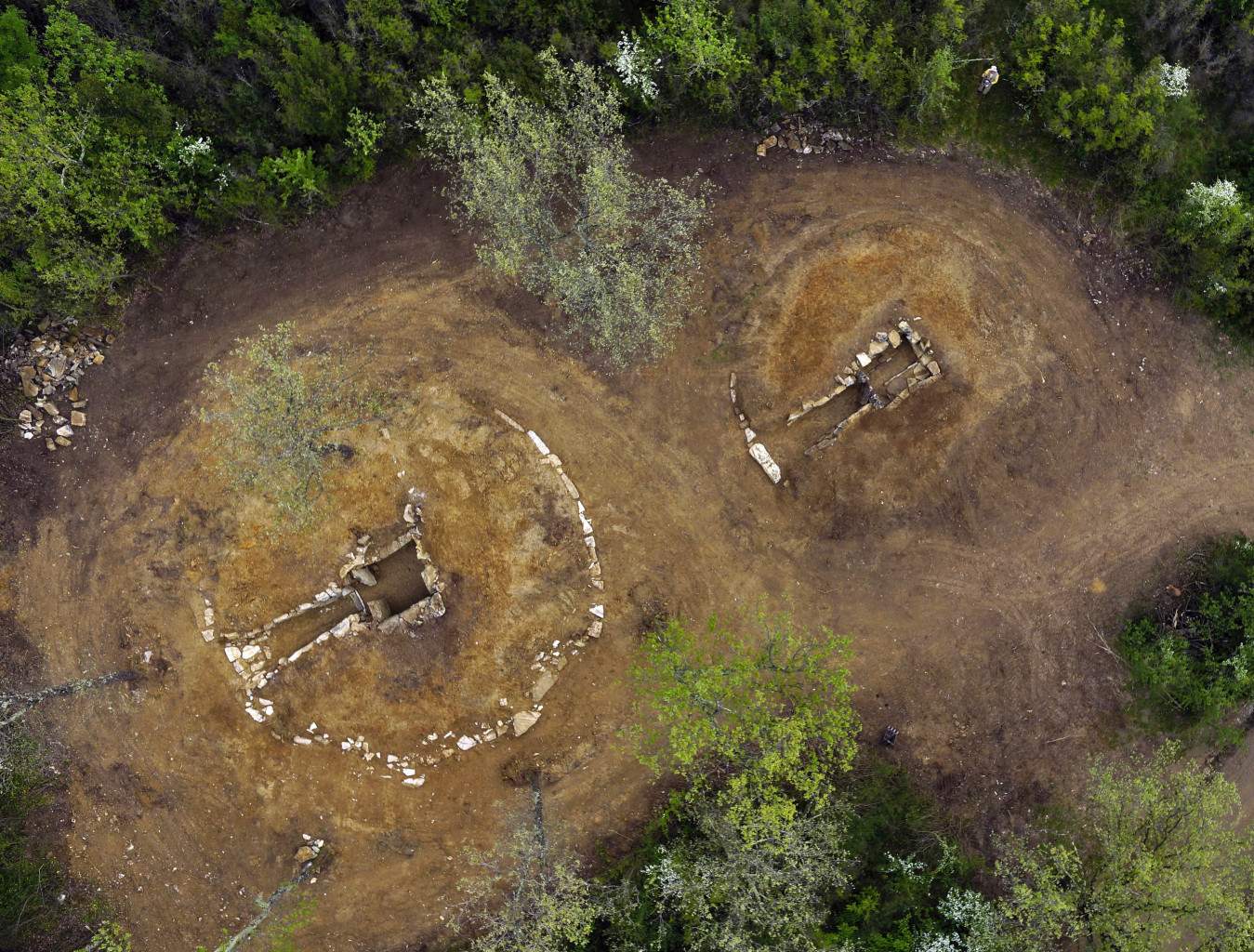The Etruscans were an indigenous people, with roots firmly established in the Italic peninsula, and did not instead come from the East as has often been assumed: this is the conclusion reached by a study coordinated by the Universities of Florence, Jena and Tübingen in Science Advances.
The Etruscan civilization, which flourished during the Iron Age in central Italy, has intrigued scholars for millennia. The Etruscans, in particular, were distinguished from their contemporary neighbors by remarkable metallurgical skills and the use of a now-extinct non-Indo-European language. Thus, the debate over their origins has been intense and has involved distinguished historians since the time of the Greek Herodotus. Now, a new study in Science Advances coordinated by the Universities of Florence, Jena and Tübingen that involved researchers from Italy (in addition to the University of Florence, University of Siena, University of Ferrara, Museum of Civilization in Rome), Germany, the United States, Denmark and the United Kingdom, sheds light on the origin and heritage of the Etruscans through genome analysis of 82 individuals from central and southern Italy who lived between 800 B.C.B.C. and the year 1000 A.D.
The results confirm that the Etruscans, despite their unique cultural expressions, were closely related to their Italic neighbors and reveal important genetic changes associated with subsequent historical events. The study, in particular, investigated the genetic history of individuals associated with the Etruscans and subsequent groups in Etruria by studying the genomes of 70 individuals. These were derived from 12 archaeological sites, with remains, dated by radiocarbon, which as mentioned span nearly two millennia, from 800 B.C. to 1,000 A.D. In addition, data were generated on the entire genomes of 16 individuals dated by radiocarbon method to the 8th century A.D., from the archaeological site of the “baths of Venosa” in Basilicata (the date refers to the midpoint of the estimated radiocarbon dates), to compare the genetic data in comparison with those of individuals who lived in the early medieval period in central and southern Italy. These data, according to the scholars who conducted the research, resolve key questions about the genetic origins of Etruscan groups and their relationships with other contemporary and later populations.
The research went on to show that there is no genetic evidence of a recent population movement from Anatolia, and demonstrated that the Etruscans shared the genetic profile of the Latins of nearby Rome and that much of their genome was derived from ancestors from the Eurasian steppe during the Bronze Age. Considering that steppe-related groups were probably responsible for the spread of Indo-European languages, now spoken worldwide by millions of people, the persistence of a non-Indo-European Etruscan language in Etruria is an intriguing and still unexplained phenomenon that will require further archaeological, historical, linguistic and genetic investigation.
“This linguistic persistence, combined with a genetic turnover, challenges the thesis that genes equal languages,” explains David Caramelli, professor of anthropology at the University of Florence, “and suggests a more complex scenario that may have involved the assimilation of early Italic peoples by the Etruscan language community, perhaps during a prolonged period of mixing in the second millennium BCE.”
Straddling the Iron Age and the period of Republican Rome, the Etruscan gene pool remained the same for at least 800 years. The study notes, however, that during the later Roman imperial period, central Italy underwent a large-scale genetic change resulting from admixture with eastern Mediterranean populations, which likely included slaves and soldiers transferred through the Roman Empire.
Looking at the more recent Dark Ages, researchers have instead identified northern European ancestors who spread throughout the Italian peninsula following the collapse of the Western Roman Empire. These findings suggest that Germanic migrants, including individuals associated with the newly established Lombard kingdom, may have left a traceable impact on the genetic landscape of central Italy.
In the regions of Tuscany, Latium and Basilicata, there is continuity in the genetic heritage of the population between the early Middle Ages and today. This finding suggests that the main gene pool of present-day people in central and southern Italy was largely formed at least 1,000 years ago. Although more ancient DNA data need to be obtained from all of Italy to support this hypothesis, lineage changes in Tuscany and northern Latium similar to those reported for the city of Rome and its environs suggest that historical events during the first millennium AD had an important impact on genetic changes across much of the Italian peninsula.
Image: Aerial view of two Etruscan tombs from San Germano di Vetulonia (Grosseto) from the 6th century AD (the human remains analyzed in this study are also from this site). Photo by Paolo Nannini
 |
| Etruscans were an indigenous people: University of Florence discovery |
Warning: the translation into English of the original Italian article was created using automatic tools. We undertake to review all articles, but we do not guarantee the total absence of inaccuracies in the translation due to the program. You can find the original by clicking on the ITA button. If you find any mistake,please contact us.